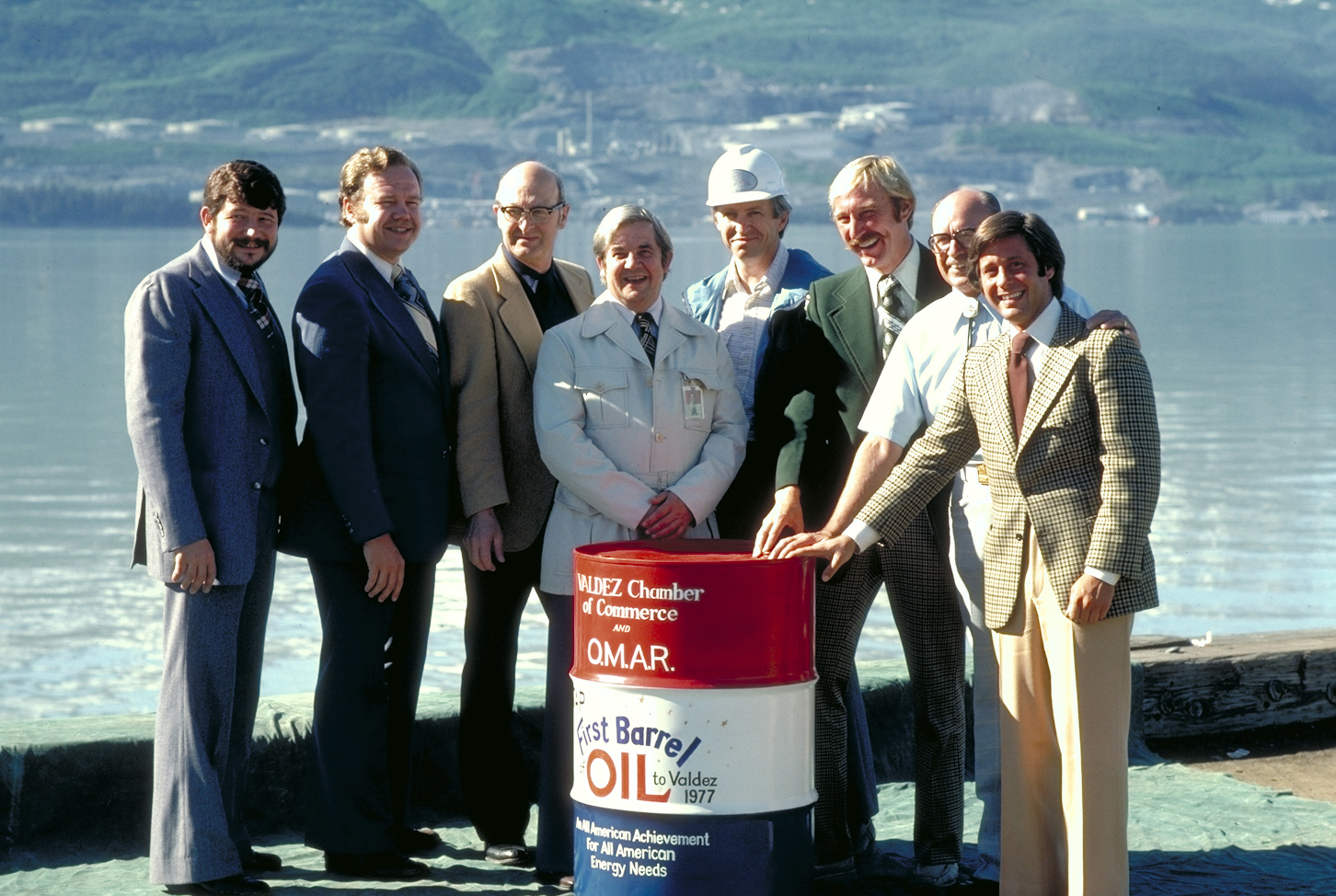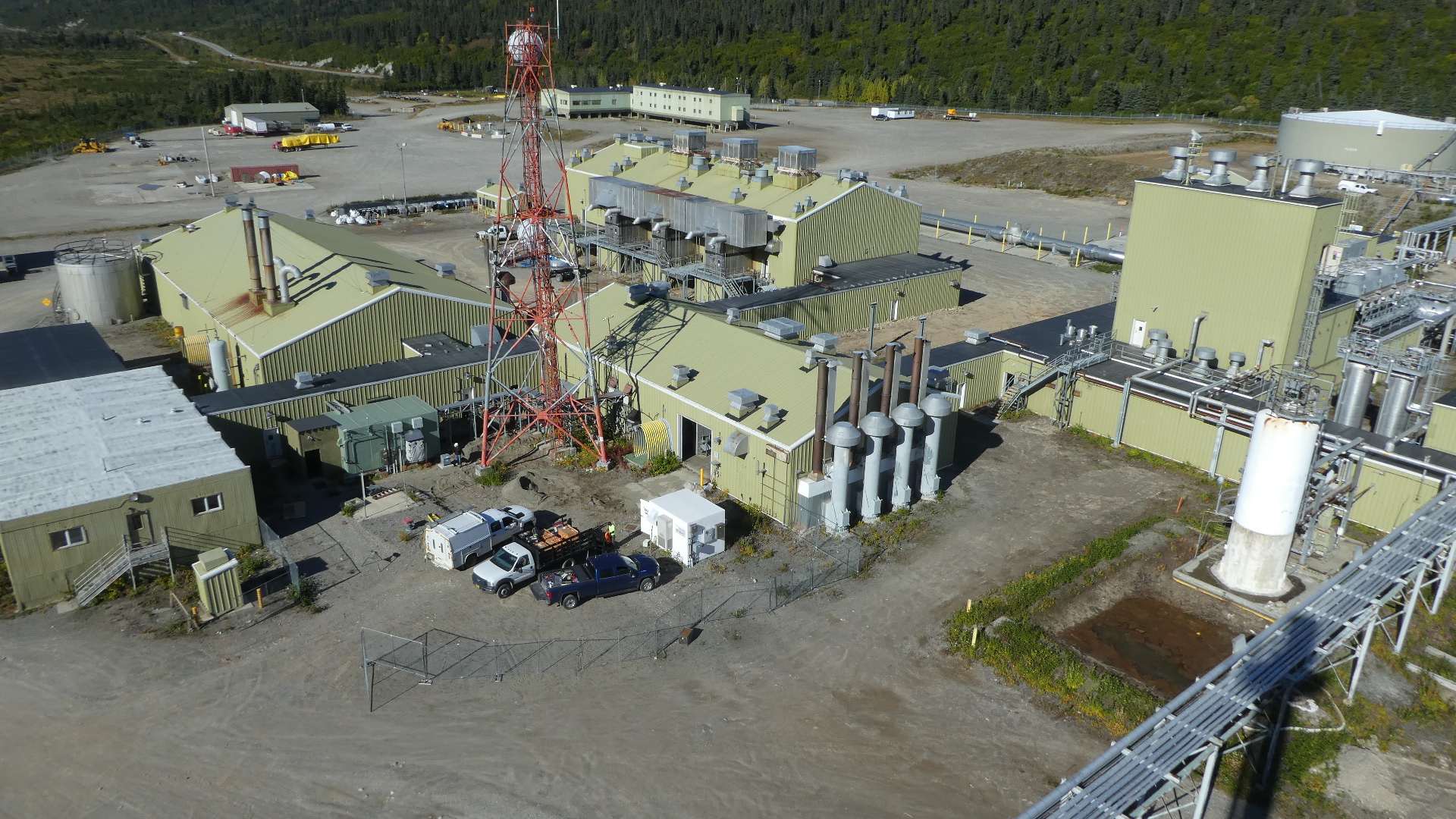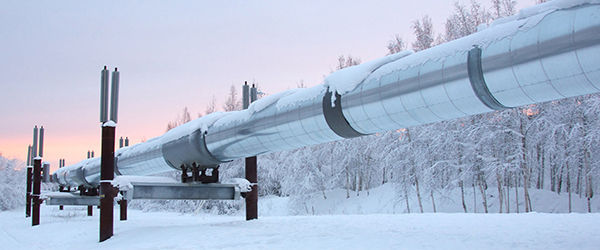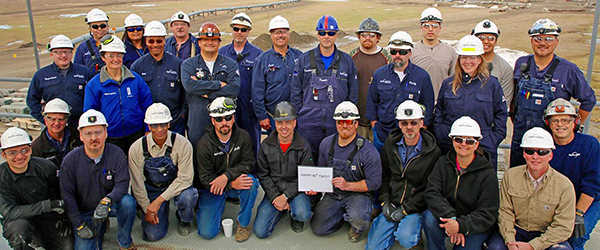Trans Alaska Pipeline System (TAPS)
Trans Alaska Pipeline System (TAPS)
The Trans Alaska Pipeline System, better known as TAPS, is an engineering marvel, a tribute to American ingenuity and hard work, a symbol of our country’s energy independence, and the heartbeat of Alaska’s economy. After celebrating 45 years of operations in 2022, TAPS remains a testament to the powerful spirit that has helped write Alaska’s history while continuing to fuel the state’s future and transporting 3.86 percent of the nation’s oil production.
At 800 miles long, TAPS is one of the world’s largest pipeline systems, transporting Alaska North Slope crude oil from Pump Station 1 in Prudhoe Bay; then travels across the state’s rugged and beautiful terrain, including traversing three mountain ranges, three major earthquake faults, and hundreds of rivers and streams; and comes to its end in Valdez, the northernmost ice-free port in North America. Tankers are loaded at the Valdez Marine Terminal, delivering about four percent of the nation’s crude oil supply to market.
More than half of the pipeline runs above ground – an engineering decision made due to Alaska’s prevalent permafrost. That visibility as it travels along Alaska’s breathtaking terrain has made it the world’s most photographed pipeline.
TAPS Operations
TAPS operates 24 hours a day, 365 days a year, as Alyeska’s employees work in Anchorage, Fairbanks, Valdez, and along the pipeline, from Pump Station 1 on the North Slope to oil spill prevention and response vessels in Prince William Sound.
Alyeska focuses on safe and flawless operations and sustainability, and works to respond to challenges posed by declining throughput. Throughput peaked at 2.1 million barrels a day in 1988, but has steadily decreased, averaging 480,199 barrels a day in 2020 and 477,798 in 2021. With lower flow levels, the crude oil takes longer to reach the Valdez Terminal – about 2 weeks, on average – and the oil is colder on arrival. This affects operations all along TAPS, from pump stations where oil is recirculated to add heat, to Valdez where pigs arrive with more accumulated wax. Learn more about TAPS historic throughput.
Alyeska continues researching and implementing adjustments necessary to operate TAPS safely and efficiently so that TAPS will remain a viable component of Alaska’s economy and the nation’s energy infrastructure.

TAPS throughput and Alaska oil
Since startup on June 20, 1977, TAPS has transported more than 18 billion barrels of Alaska North Slope crude from the North Slope to Valdez. When TAPS operations began, the pipeline moved 610,408 per day. At peak flow in 1988, 11 pump stations moved 2.1 million barrels of oil every day. Throughput in 2016 averaged 517,868 barrels a day, with four active pump stations remaining in the system. The 2016 average was the first increase in TAPS throughput since 2002. Throughput increased again in 2017, averaging 527,323 barrels a day, before dropping to 509,315 barrels a day in 2018. In 2019, TAPS daily throughput average dropped below 500,000 for the first time, ending at 490,366. By 2021, daily throughput had dropped to 477,798 barrels.
Crude oil
Crude is a fluid made up of various hydrocarbon components, natural gas liquids and fixed gases. Alyeska does not own any crude oil produced on the North Slope. Alyeska takes custody of crude oil at Pump Station 1 on behalf of the TAPS owners, transports the oil across the state of Alaska to the port of Valdez, and loads the oil onto tankers. Once the oil is loaded onto tankers, Alyeska releases custody of the oil.

Pump Stations
Pump stations were strategically built and located along the 800-mile TAPS route to keep the oil moving from the North Slope to Valdez, using booster pumps. TAPS was originally designed to operate with 12 pump stations, but only started with 11. Today only four are operational.
TAPS Owners
A consortium of companies owns TAPS. Alyeska Pipeline Service Company acts as TAPS operator and transportation service on behalf of the three TAPS owner companies. Currently, TAPS ownership and percentages* are:
- Harvest Alaska, LLC. 49.1069%
- ConocoPhillips Transportation Alaska, Inc. 29.6102%
- ExxonMobil Pipeline Company LLC 21.2829%
*Updated February 2022



